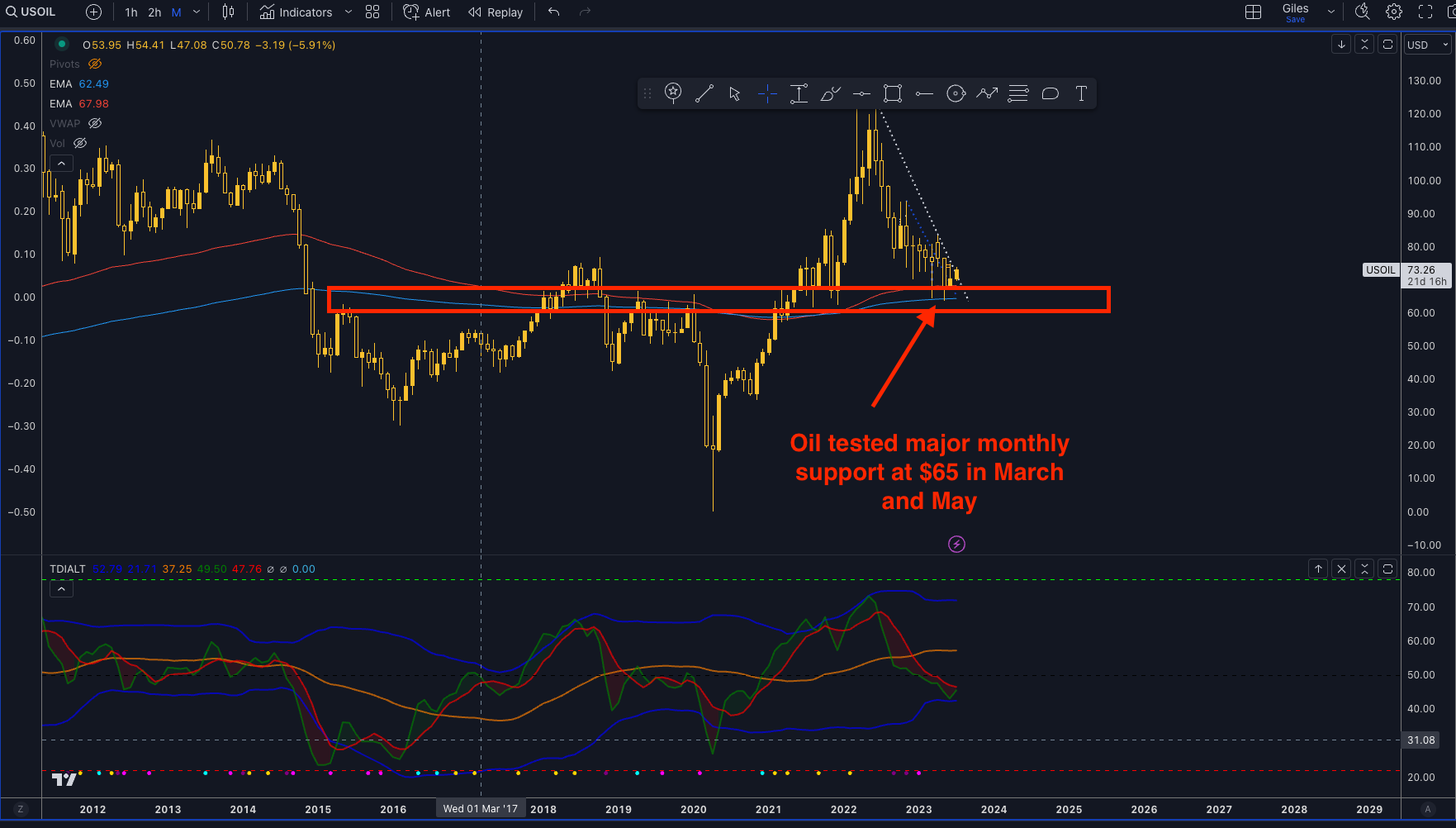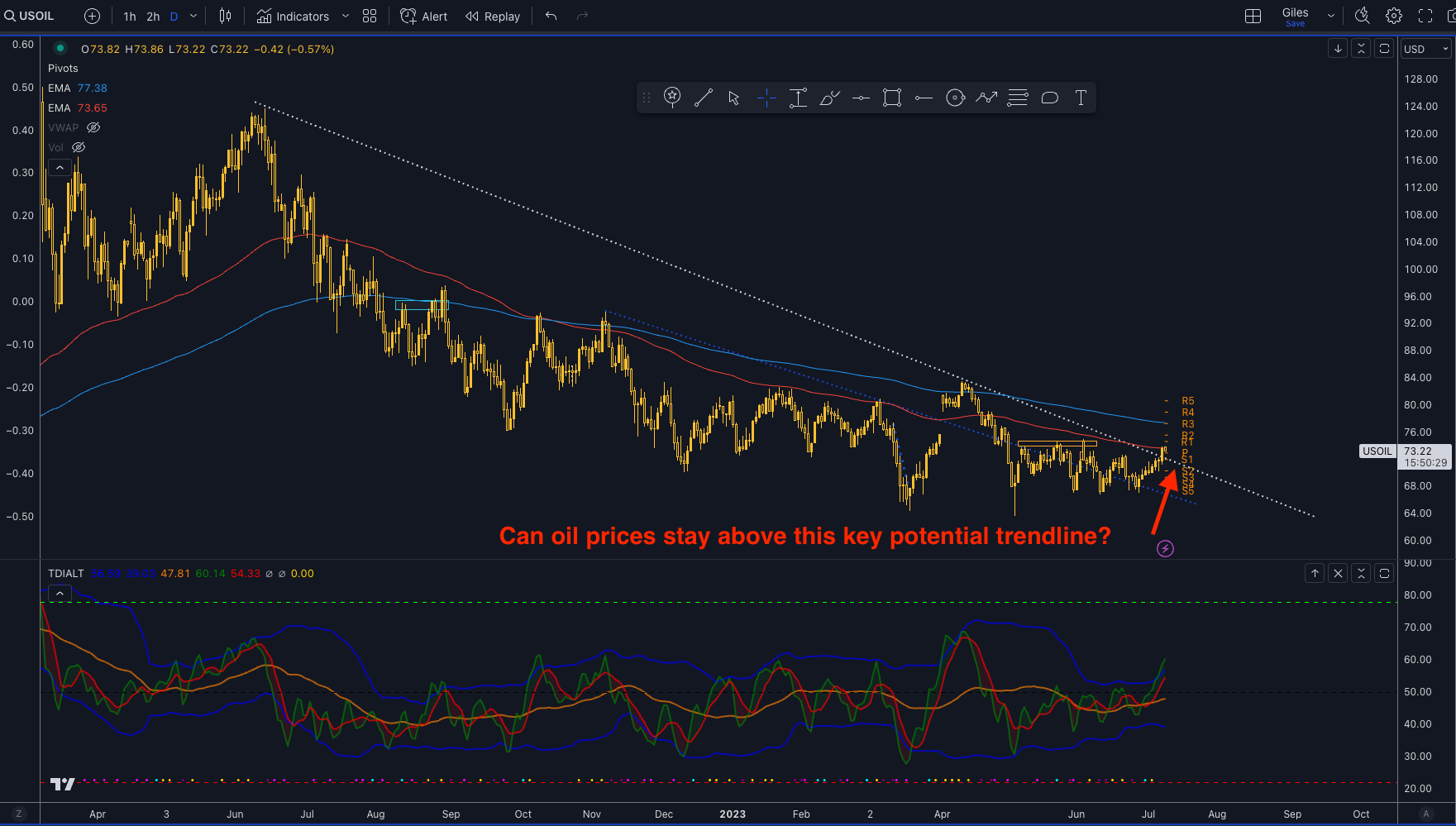To start the year, analysts were optimistic about oil prices. China’s recovery from Covid was expected to boost demand, supply was expected to tighten in the second half of the year, and when Russia sent troops into Ukraine the sanctions imposed on them were expected to further reduce oil supply. However, China’s recovery was slower than expected, inventory levels have only just started to fall now, seasonals played out weakly, and sanctions on Russia only had a limited impact on reducing supply. All this meant that oil has continually been flirting with key support on the monthly chart marked below.
The monthly support has been held and oil has found a steady level now after the latest OPEC+ meeting. In the meeting, Saudi Energy Minister said OPEC+ will do “whatever is necessary” to support the market. Further news of production cuts from Saudi and Russia helped to underpin the oil market last week. Some analysts are also noting that the cost of storing oil has now increased and this could mean that firms now have an incentive for oil stockpiles to fall. In principle, this could now boost oil prices. So, is the bottom now in for oil prices, or will further fall still occur?
Daily technical picture
On the daily chart, oil has moved above a key potential trend line marked below.
Oil bulls will need to see the price stay above this level to keep the bullish picture alive. Note too, the 100 and 200 daily EMA’s on the chart as key resistance levels that still sit overhead. The big global narratives are still uncertain with inflation still proving tricky for central banks to manage. So, can oil bottom here? Can risk be easily defined underneath this key daily trend line? Or should a wider stop be used underneath $64? The outlook for oil is uncertain and managing risk will remain key for oil bulls moving forward.
Our products and commentary provides general advice that do not take into account your personal objectives, financial situation or needs. The content of this website must not be construed as personal advice.
Recommended Content
Editors’ Picks

EUR/USD extends recovery beyond 1.0400 amid Wall Street's turnaround
EUR/USD extends its recovery beyond 1.0400, helped by the better performance of Wall Street and softer-than-anticipated United States PCE inflation. Profit-taking ahead of the winter holidays also takes its toll.

GBP/USD nears 1.2600 on renewed USD weakness
GBP/USD extends its rebound from multi-month lows and approaches 1.2600. The US Dollar stays on the back foot after softer-than-expected PCE inflation data, helping the pair edge higher. Nevertheless, GBP/USD remains on track to end the week in negative territory.

Gold rises above $2,620 as US yields edge lower
Gold extends its daily rebound and trades above $2,620 on Friday. The benchmark 10-year US Treasury bond yield declines toward 4.5% following the PCE inflation data for November, helping XAU/USD stretch higher in the American session.

Bitcoin crashes to $96,000, altcoins bleed: Top trades for sidelined buyers
Bitcoin (BTC) slipped under the $100,000 milestone and touched the $96,000 level briefly on Friday, a sharp decline that has also hit hard prices of other altcoins and particularly meme coins.

Bank of England stays on hold, but a dovish front is building
Bank of England rates were maintained at 4.75% today, in line with expectations. However, the 6-3 vote split sent a moderately dovish signal to markets, prompting some dovish repricing and a weaker pound. We remain more dovish than market pricing for 2025.

Best Forex Brokers with Low Spreads
VERIFIED Low spreads are crucial for reducing trading costs. Explore top Forex brokers offering competitive spreads and high leverage. Compare options for EUR/USD, GBP/USD, USD/JPY, and Gold.

